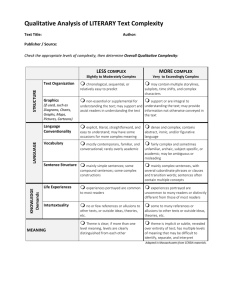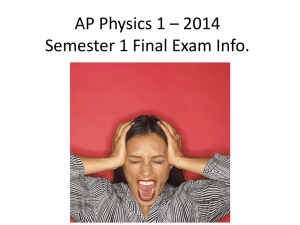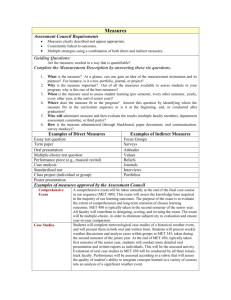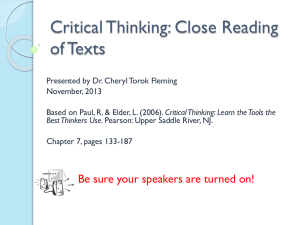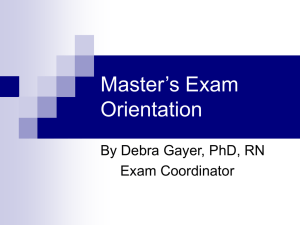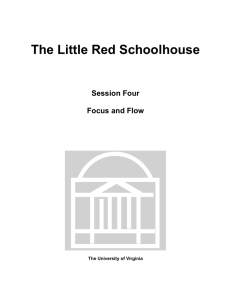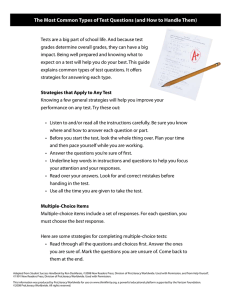English 1 SAT/ACT vocabulary
advertisement
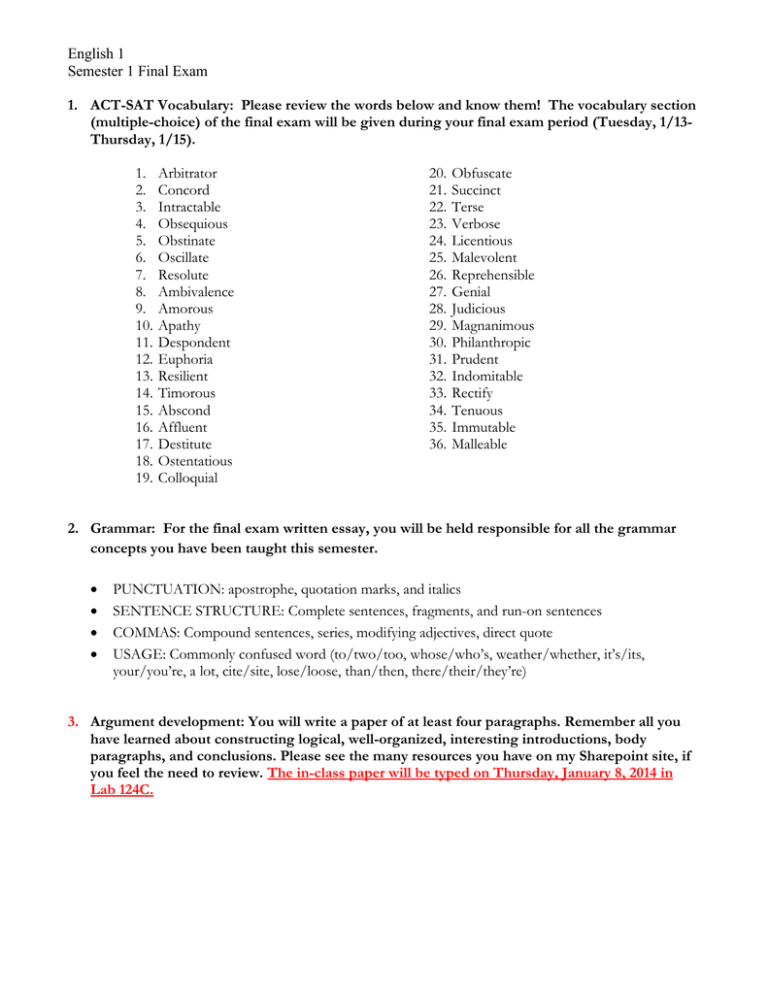
English 1 Semester 1 Final Exam 1. ACT-SAT Vocabulary: Please review the words below and know them! The vocabulary section (multiple-choice) of the final exam will be given during your final exam period (Tuesday, 1/13Thursday, 1/15). 1. 2. 3. 4. 5. 6. 7. 8. 9. 10. 11. 12. 13. 14. 15. 16. 17. 18. 19. Arbitrator Concord Intractable Obsequious Obstinate Oscillate Resolute Ambivalence Amorous Apathy Despondent Euphoria Resilient Timorous Abscond Affluent Destitute Ostentatious Colloquial 20. 21. 22. 23. 24. 25. 26. 27. 28. 29. 30. 31. 32. 33. 34. 35. 36. Obfuscate Succinct Terse Verbose Licentious Malevolent Reprehensible Genial Judicious Magnanimous Philanthropic Prudent Indomitable Rectify Tenuous Immutable Malleable 2. Grammar: For the final exam written essay, you will be held responsible for all the grammar concepts you have been taught this semester. PUNCTUATION: apostrophe, quotation marks, and italics SENTENCE STRUCTURE: Complete sentences, fragments, and run-on sentences COMMAS: Compound sentences, series, modifying adjectives, direct quote USAGE: Commonly confused word (to/two/too, whose/who’s, weather/whether, it’s/its, your/you’re, a lot, cite/site, lose/loose, than/then, there/their/they’re) 3. Argument development: You will write a paper of at least four paragraphs. Remember all you have learned about constructing logical, well-organized, interesting introductions, body paragraphs, and conclusions. Please see the many resources you have on my Sharepoint site, if you feel the need to review. The in-class paper will be typed on Thursday, January 8, 2014 in Lab 124C. English 1 Semester 1 Final Exam 4. ACADEMIC Vocabulary: Review your understanding and your ability to recognize the following words in a written text. The academic vocabulary section (multiple-choice) of the final exam will be given during your final exam period (Tuesday, 1/13-Thursday, 1/15). Unit 1: Conflict (i.e., external & internal) - Dialogue - Foreshadowing - Irony (i.e., verbal, dramatic, and situational) - Plot (i.e., introduction/exposition, rising action, climax, falling action, resolution) - Suspense Unit 2: - Character motives - Character traits - Characterization (different methods) - First-Person Point of View - Third-Person Point of View (omniscient or limited) Unit 3: - Connotation/denotation - Imagery - Paraphrase - Symbol - Setting - Mood *Remember that all good readers do the following: 1. Monitor understanding: “When you read, pause every few minutes to check, or monitor, how well you are understanding the story [or text].” By doing the following: “visualize: picture characters, events, and settings; clarify: stop now and then to review what you understand; question: ask questions about the events and characters; predict: look for hints of what might happen next; and connect: compare events with your own experiences.” 2. Draw conclusions: “After reading a story, you often add up the details you’ve read about and develop your own ideas about what they mean. A conclusion is a logical judgment that a reader makes and does so based on the following: evidence from the text and your own experience and knowledge.” 3. Make inferences: “Instead of directly telling readers what a character is like, a writer often includes details that turn out to be clues to the character’s personality. Readers can use these details, along with their own knowledge, to make inferences, or logical guesses, about the character’s traits, values, and feelings.”
